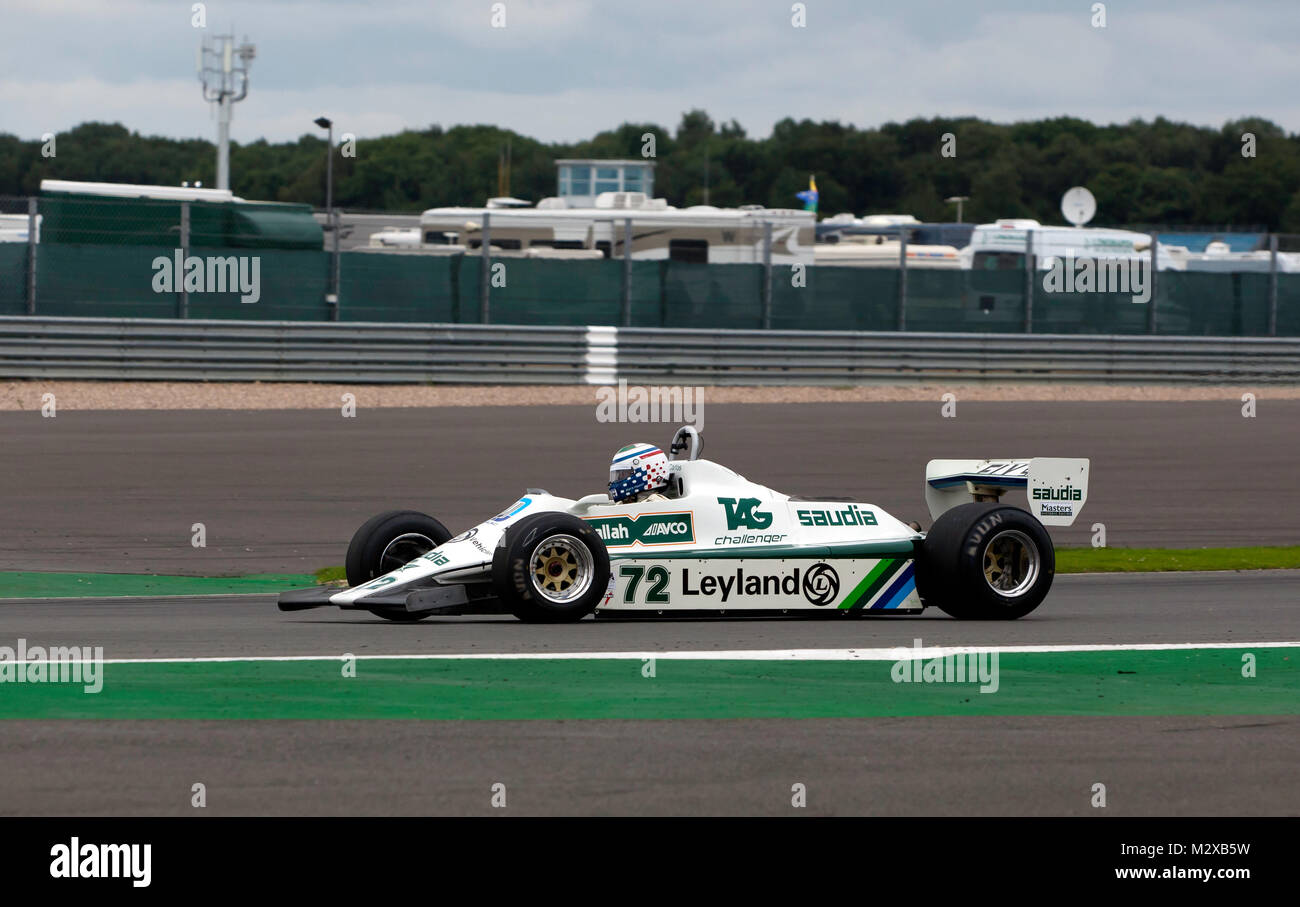Mark Hazell driving a 1980, Williams FW07B, during the FIA Masters Historic Formula One Race at the 2017 Silverstone Classic

Image details
Contributor:
John Gaffen / Alamy Stock PhotoImage ID:
M2XB5WFile size:
27.1 MB (759 KB Compressed download)Releases:
Model - no | Property - noDo I need a release?Dimensions:
3881 x 2440 px | 32.9 x 20.7 cm | 12.9 x 8.1 inches | 300dpiDate taken:
29 July 2017Location:
Silverstone Circuit, Towcester, UKMore information:
The Williams FW07 was a ground effect Formula One racing car designed by Patrick Head, Frank Dernie, and Neil Oatley for the 1979 F1 season. It was closely based on the Lotus 79, even being developed in the same wind tunnel at Imperial College London. Some observers, among them Lotus aerodynamicist Peter Wright felt the FW07 was little more than a re-engineered Lotus 79. The car was small and simple and extremely light, powered by the ubiquitous Ford Cosworth DFV. It had very clean lines and seemed to be a strong challenger for the new season, but early reliability problems halted any serious threat for the title. While not the first to use ground effects in Formula One, an honour belonging to Colin Chapman and the Lotus 78 (the Lotus 79's predecessor), Head may have had a better grasp of the principles than even Chapman. .he car made its debut partway through the 1979 season, and served to make Team Williams a contender for perhaps the first time.[2] It was driven by Alan Jones and Clay Regazzoni, who took the Williams team's first win in that year's British Grand Prix, before Jones stepped up and won 4 of the next 5 races with the nimble car. Although they lost out to Ferrari for the world titles in 1979, Williams had established themselves as the team to beat for 1980. he FW07 became FW07B in 1980, and Regazzoni was replaced by Carlos Reutemann. While the latter and Williams's other driver, Alan Jones, formed a successful partnership, they were not comfortable with each other. Both drivers developed the FW07 further, working especially on setup and suspension strengthening. The car was now so efficient in creating downforce from its ground effect design that the front wings were unnecessary. Jones won five races in Argentina, France, Britain, Canada and Watkins Glen in the USA to win his only world championship, while Reutemann won at a wet race in Monaco. Williams won also their first Constructors' Championship.